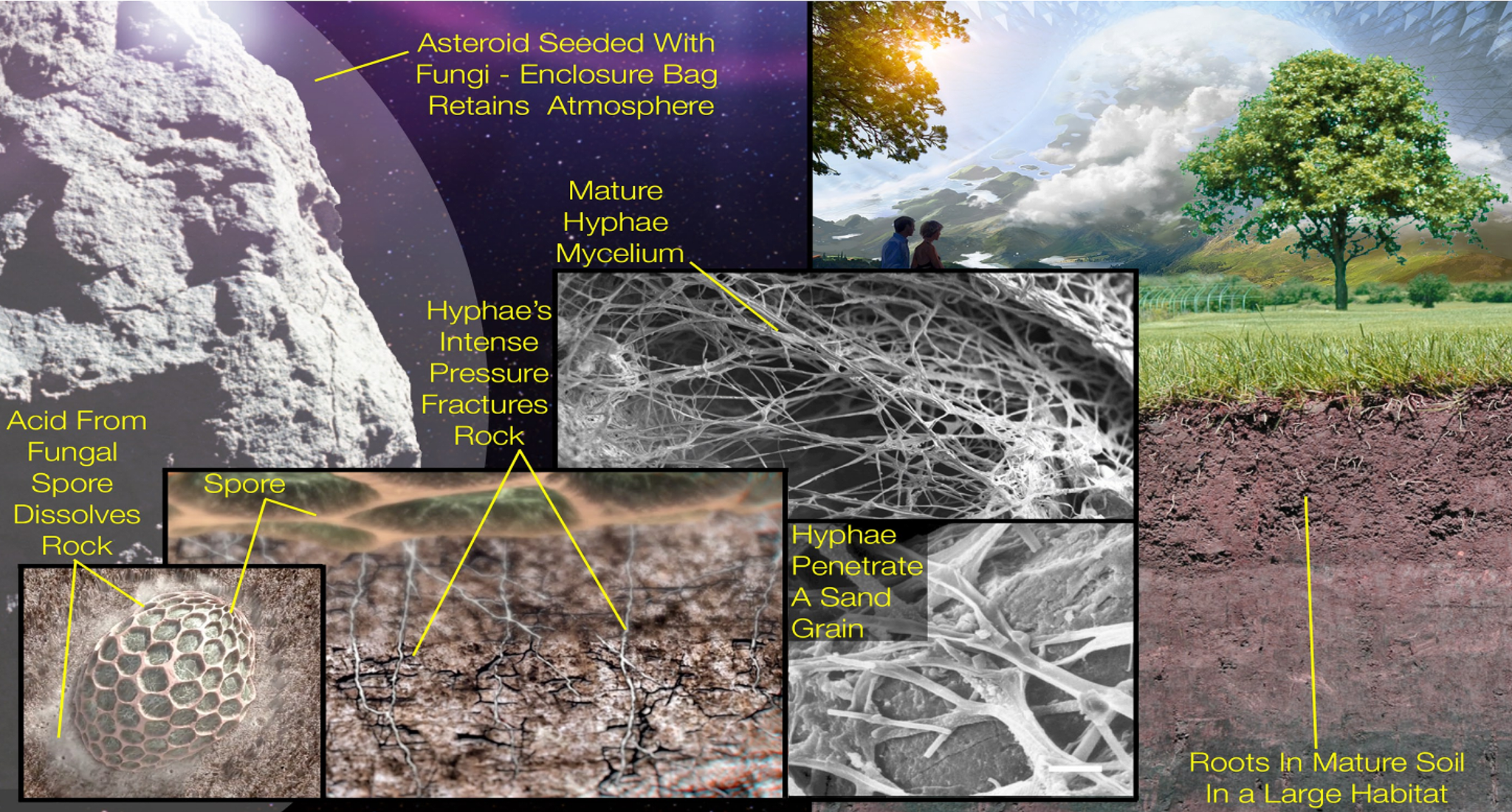Jane Shevtsov
Trans Astronautica Corporation
Background and Objectives: Any large, long-term human space habitat will need to grow most of its own food and recycle nutrients. For easily resupplied missions, growing crops hydroponically makes sense, but soil-based systems possess important advantages in the context of a large settlement that cannot be affordably resupplied from Earth.
One proposed habitat design is a cylinder that rotates to create artificial gravity and houses up to 8000 people, for purposes such as asteroid mining, space manufacturing and research. This habitat is meant to be self-sustaining with regards to food and have ample green space, which both supports crew mental health and functions as part of the life support system. At this scale, hydroponics would run into difficulties with the amount of machinery needed and the concomitant proliferation of failure points such as pumps and tubing. Moreover, hydroponic systems require nutrient solutions and do not easily lend themselves to the recycling of agricultural and human waste, which is readily accomplished in a soil-based system through composting the waste (possibly using thermophilic methods that are effective at killing pathogens) and incorporating it into soil.
Instead, we propose to create soil from carbon-rich asteroid material, using fungi to physically break down the material and chemically degrade toxic substances. We will use fungi to help turn asteroid material into soil. The basic idea is to inoculate carbonaceous asteroid material with fungi to initiate soil formation. Fungi are excellent at breaking down complex organic molecules, including those toxic to other life forms. For example, oyster mushrooms (Pleurotus ostreatus) have been shown to successfully clean up petroleumcontaminated soil by digesting the hydrocarbons making up the petroleum. Fungal hyphae can penetrate long distances into cracks and exert large amounts of pressure, physically breaking down rock – some even live inside rocks. Indeed, evidence indicates that fungi played a key role in early soil formation on Earth.
Approach: Two tasks would be performed during Phase 1. Task 1 will be to identify the leading fungal species for experimental use on simulated asteroid material, followed by study of their soil production rates and the effects of physical parameters such as temperature, humidity and oxygen concentration. Task 2 will be to evaluate a number of different approaches for performing the breakdown of asteroid regolith by fungi in space – ranking them in terms of productivity and estimated costs, as well as sizing them to support a target mission habitat within a reasonable amount of time.
Significance: The research proposed here will support efforts to develop large space habitats with ample green space and robust agricultural systems. These will then open the door to other activities, such as space mining, manufacturing, and scientific research. While an expandable habitat can support many types of activities, our soil-making process is a particularly natural fit for asteroid mining operations targeting volatiles, as they use carbonaceous asteroids and leave behind leftover regolith that should make a suitable parent material for soil production. Our method turns this leftover regolith into a valuable resource. This concept should be exciting to everyone working on off-planet habitats and their applications – a major part of the move toward space commercialization and, in a larger sense, becoming a space-faring species.






























